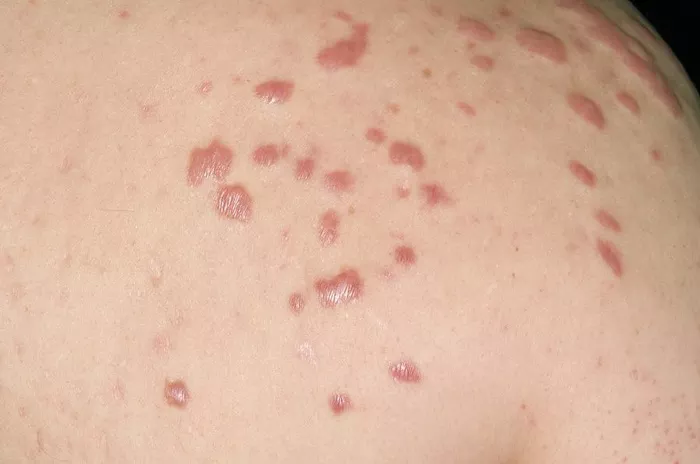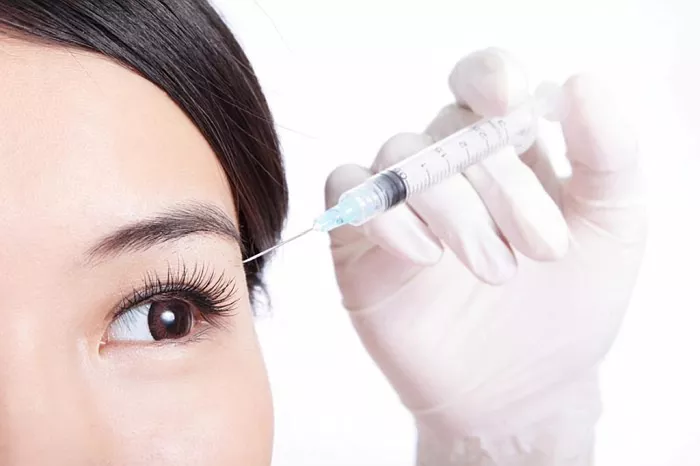Keloid scars are a common yet complex skin condition that affects many individuals worldwide. These scars extend beyond the original wound site and can be disfiguring and symptomatic, often causing pain, itching, and emotional distress. This article explores the nature of keloid scars, their causes, current treatment options, and the possibility of permanent removal.
Understanding Keloid Scars
What Are Keloid Scars?
Keloid scars are a type of raised scar that grows excessively beyond the boundaries of the original wound. Unlike hypertrophic scars, which remain within the wound edges, keloids can expand indefinitely, forming large, smooth, and often shiny lumps. They can occur anywhere on the body but are more common on the chest, shoulders, earlobes, and cheeks.
The Biological Mechanism of Keloid Formation
Keloid scars result from an overproduction of collagen during the wound healing process. Normally, when the skin is injured, the body produces collagen to repair the damage. In keloid formation, this process goes awry, and fibroblasts (the cells responsible for collagen production) generate excess collagen. This leads to a raised, fibrous scar that continues to grow even after the wound has healed.
Causes and Risk Factors
Genetic Predisposition
Genetics play a significant role in the development of keloid scars. Individuals with a family history of keloids are more likely to develop them. Certain ethnic groups, particularly those of African, Asian, and Hispanic descent, have a higher predisposition to keloid formation.
Skin Injuries
Keloids can form after various types of skin injuries, including surgical incisions, piercings, burns, acne, and even minor cuts or insect bites. The severity of the injury does not necessarily correlate with the likelihood of keloid formation; even small wounds can lead to significant keloid scars in susceptible individuals.
Age and Hormonal Factors
Age can also influence keloid formation. Keloids are more common in individuals between the ages of 10 and 30. Hormonal changes during puberty and pregnancy may exacerbate the condition, suggesting a possible link between hormones and keloid development.
Current Treatment Options
Corticosteroid Injections
Corticosteroid injections are one of the most common treatments for keloid scars. They help reduce inflammation and shrink the scar tissue. These injections are usually administered directly into the keloid and may be repeated every few weeks. While corticosteroids can flatten and soften keloids, they do not guarantee permanent removal, and keloids can recur after treatment.
Surgical Removal
Surgical excision involves cutting out the keloid scar. However, this method has a high risk of recurrence, with new keloids often forming at the surgical site. To mitigate this risk, surgical removal is often combined with other treatments, such as corticosteroid injections or radiation therapy.
Cryotherapy
Cryotherapy involves freezing the keloid tissue with liquid nitrogen. This treatment can reduce the size of the keloid but is generally more effective on smaller scars. Cryotherapy may cause skin discoloration, particularly in individuals with darker skin tones.
Laser Therapy
Laser therapy uses high-intensity light to reduce the size and improve the appearance of keloid scars. Different types of lasers, such as pulsed dye lasers and fractional CO2 lasers, are used depending on the scar’s characteristics. While laser therapy can be effective, multiple sessions are often required, and the results are not always permanent.
Radiation Therapy
Radiation therapy is sometimes used after surgical removal of keloids to prevent recurrence. Low-dose radiation can inhibit the proliferation of fibroblasts and reduce collagen production. Although effective, the use of radiation therapy is limited due to potential long-term side effects, including the risk of skin cancer.
Silicone Gel Sheets and Topical Treatments
Silicone gel sheets and topical silicone-based treatments are non-invasive options that can help flatten and soften keloid scars. These treatments work by hydrating the scar tissue and protecting it from mechanical stress. While silicone treatments are generally safe and can improve the scar’s appearance, they often require prolonged use and may not be effective for larger keloids.
Pressure Therapy
Pressure therapy involves applying pressure to the keloid using custom-made garments or bandages. This method is commonly used for keloids on the earlobes after piercing. Pressure therapy can help flatten the scar and reduce its size, but it requires consistent use over several months to see results.
See Also: Do True Height Vitamins Work?
Emerging Treatments and Research
Stem Cell Therapy
Stem cell therapy is an emerging field in the treatment of keloid scars. Researchers are exploring the use of mesenchymal stem cells (MSCs) to modulate the wound healing process and reduce keloid formation. Early studies show promise, but more research is needed to determine the efficacy and safety of this approach.
Gene Therapy
Gene therapy aims to correct the genetic factors that contribute to keloid formation. This innovative approach involves modifying the expression of specific genes involved in collagen production and fibroblast activity. Although still in the experimental stage, gene therapy holds potential for preventing and treating keloid scars at the molecular level.
Botulinum Toxin (Botox)
Botulinum toxin, commonly known as Botox, has been investigated as a treatment for keloid scars. Botox injections can reduce muscle tension around the scar and potentially inhibit the proliferation of fibroblasts. While preliminary results are encouraging, further research is needed to establish its effectiveness and long-term outcomes.
Can Keloids Be Removed Permanently?
Challenges in Achieving Permanent Removal
Despite the variety of treatments available, achieving permanent removal of keloid scars remains challenging. Keloids have a high recurrence rate, and no single treatment guarantees permanent results. The complexity of keloid formation, influenced by genetic, hormonal, and environmental factors, makes it difficult to find a one-size-fits-all solution.
Combination Therapies
Combining different treatment modalities often yields better results than using a single approach. For example, surgical excision followed by corticosteroid injections or radiation therapy can reduce the risk of recurrence. Similarly, combining laser therapy with silicone gel sheets can enhance scar reduction. Individualized treatment plans tailored to the patient’s specific condition and response to therapy are crucial for achieving the best possible outcomes.
Preventive Measures
Preventing keloid formation is often more effective than treating existing scars. Individuals prone to keloids should take precautions to minimize skin injuries and avoid elective surgeries or piercings. Prompt treatment of acne and other skin conditions that can lead to keloid formation is also essential. Using pressure garments or silicone gel sheets on healing wounds can help prevent keloid development in high-risk individuals.
Conclusion
Keloid scars present a complex challenge for patients and healthcare providers alike. While current treatments can significantly improve the appearance and symptoms of keloids, achieving permanent removal remains elusive. Advances in research, particularly in stem cell therapy, gene therapy, and personalized medicine, hold promise for more effective and lasting solutions. In the meantime, a combination of preventive measures, individualized treatment plans, and psychological support can help individuals manage keloid scars and improve their quality of life.
[inline_related_posts title=”You Might Be Interested In” title_align=”left” style=”list” number=”6″ align=”none” ids=”10093,9991,9986″ by=”categories” orderby=”rand” order=”DESC” hide_thumb=”no” thumb_right=”no” views=”no” date=”yes” grid_columns=”2″ post_type=”” tax=””]

































